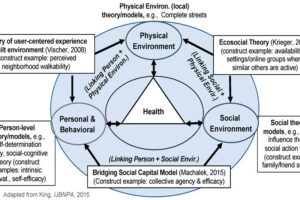
7. (c) How do small and fragmented landholdings affect the agro-ecological system in rural India? What are the resilient steps needed to overcome this issue? 15Marks (PYQ/2024)
Answer:
Introduction
In India, small and fragmented landholdings are a hallmark of rural agriculture. Over 86% of Indian farmers are classified as small and marginal, with the average operational holding shrinking from approximately 2.3 hectares in 1970–71 to about 1.08 hectares in 2015–16 (Census of India). Fragmentation leads to inefficient use of resources, reduced scope for mechanization, and challenges in maintaining soil fertility, which in turn adversely affect the agro-ecological system. To address these challenges, resilient steps such as cooperative farming, land pooling, and enhanced technological adoption are required.

Models
Land Fragmentation Models
- Gini Index of Land Concentration: This quantitative model measures the inequality of land distribution among farmers. A higher Gini coefficient indicates severe fragmentation. For example, studies show that increasing fragmentation leads to a high Simpson Index, reducing operational efficiency in agriculture. Key Insight: Monitoring land concentration helps in formulating policies for land consolidation.
- Spatial Analysis Models using GIS: GIS-based locational analysis integrates data on soil quality, water availability, and land use patterns, thus revealing how fragmentation disrupts continuous management practices essential for maintaining agro-ecological balance. Source: MOSPI Explainer Series.
Theories
Agrarian Structure and Resource Competition Theories
- Land Fragmentation Theory (Demetriou and Van Dijk): This theory (as discussed by Demetriou (2014) and Van Dijk (2003)) defines fragmentation as the division of a single farm into several isolated parcels, leading to inefficiencies in inputs, mechanization, and overall productivity.
- Smallholder Agriculture Theory: Emphasizes that while smallholdings can promote subsistence and food security, extreme fragmentation limits economies of scale, increases transaction costs, and undermines sustainable agricultural practices. Key Insight: Consolidation or collaborative approaches can reclaim efficiencies lost due to fragmentation.
Laws
Legal and Policy Frameworks
- Agrarian Reform Acts and Land Reforms: Various state-level agrarian reform legislations were introduced to redistribute land to the landless and protect small farmers. However, these reforms—though well-intended—have contributed to fragmentation over successive generations due to inheritance laws mandating equal division.
- National Policy on Farmers: Recent policies encourage land leasing, movements toward contract farming, and the formation of Farmer Producer Organizations (FPOs) to overcome the constraints posed by fragmented landholdings. Source: Ministry of Agriculture, Government of India.
Perspectives
Political Economy and Sustainable Development Perspectives
- Political Economy Perspective (Immanuel Wallerstein): This perspective examines how power dynamics and resource distribution affect rural communities. It suggests that fragmented landholdings often perpetuate rural poverty and restrict farmers’ bargaining power in the marketplace.
- Sustainable Development Perspective (Brundtland Commission): Argues that sustainable agricultural growth must balance economic, social, and environmental factors. Consolidated farming—via cooperatives and FPOs—is seen as a means to improve productivity while conserving soil and water resources. Key Insight: Resilient strategies should empower farmers through shared resources and modern technology.
Case Studies
Case Study 1: Rautari Village, Nadia District, West Bengal
- Overview: A study conducted in Rautari village revealed extreme land fragmentation among small-marginal farmers.
- Data & Impact: The average holding size declined to approximately 0.68 hectares, leading to low productivity. Innovative community-based land pooling initiatives have been suggested to enhance resource utilization. Source: Research article in the Indian Journal of Agricultural Sciences (2020).
Case Study 2: Bundelkhand Region (Madhya Pradesh and Uttar Pradesh)
- Overview: In Bundelkhand, chronic land fragmentation has worsened water scarcity and soil degradation, impacting agricultural sustainability.
- Data & Impact: Reports indicate that fragmented holdings limit mechanization and raise input costs by 20–25%. Formation of Farmer Producer Organizations (FPOs) and contract farming models have started showing promise in consolidating resources and improving output. Source: Economic Survey of India (2022); NITI Aayog Reports.
Conclusion
Small and fragmented landholdings adversely affect the agro-ecological system in rural India by reducing efficiencies and limiting sustainable management practices. Resilient steps—such as land pooling, formation of FPOs, and improved technological support—offer pathways to mitigate these challenges. Integrating quantitative models like the Gini Index and spatial analysis, alongside agrarian theories and supportive legal frameworks, is essential to transform fragmented landscapes into productive and sustainable agricultural systems.
Tag:agro-ecological system in rural india, Geography Case Study, Geography Optional, geography optional case study, Geography Optional Pyq, geography optional pyq 2024, human geography, marginal landholding, models theories laws and perspective in geography, small and fragmented land holding, small land holding


